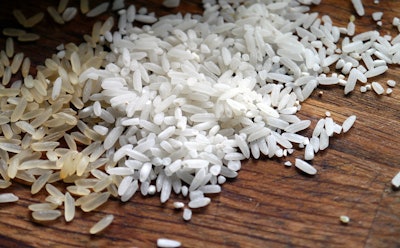
India's grain exports have seen significant declines over the past three years, impacted by robust domestic demand and restrictive government policies, according to the latest report from the United States Department of Agriculture's Foreign Agricultural Service. The report indicates a dramatic reduction in grain exports from trade year (TY) 2020/21 to 2023/24, with corn exports falling by 86%, rice by 20%, and wheat by a substantial 90%.
The decline in exports is attributed to several factors, including India's ethanol policy, which prioritizes corn for domestic ethanol production, and the rising demand for corn from the poultry industry. Furthermore, governmental restrictions, including export bans on certain types of rice and wheat, have tightened the supply of these grains on the global market.
This shift has significant implications for global grain markets, particularly affecting India's traditional trade partners in South and Southeast Asia. The change in policy and market dynamics has transformed India from a leading exporter to a net importer of corn for the first time this century, with the country beginning to import corn to meet its internal demands after a hiatus since 2019/20.
The U.S. Grains Council highlights that global corn prices, which declined by 15% year over year, have further influenced the competitiveness of Indian exports, encouraging the importation of more favorably priced corn. These market dynamics are detailed in the Coarse Grains Market Feature within the report.
Regarding rice, India has historically been the largest global exporter. However, the recent governmental measures, including a ban on certain rice exports and export taxes on others, have disrupted global rice markets, initially causing a spike in prices. These measures remain despite India holding large rice stocks, leading international buyers to turn to other major suppliers like Vietnam and Thailand.
The wheat market has also been affected significantly. India's wheat exports have been negligible following the government's implementation of an export ban in May 2022. This ban was intended to control domestic prices following a smaller crop yield and a surge in exports. As a result, wheat ending stocks for 2023/24 have dwindled to their lowest levels in over 15 years. Flour millers in India have been lobbying for a waiver on the 40% wheat import tariff to allow for necessary imports to meet domestic demand.
Looking ahead to the 2024/25 trade year, the report forecasts record-high global wheat production, despite cuts to forecasts for the European Union and the United States. Global consumption is also expected to increase, driven by higher feed and residual use in several countries and rising food, seed, and industrial use in others.
In summary, the USDA report provides a comprehensive overview of the challenges and shifts within India's grain market, underscoring the broader impacts on global agricultural trade and market dynamics.

















